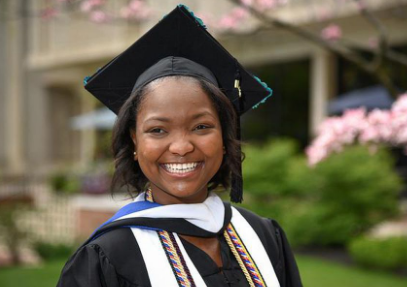The Debate About College Shouldn't Be A Debate At All
ByRichard Barth (op-ed)
Read the full article at Forbes >
As the CEO of KIPP – a national network of over 200 college preparatory public charter schools – I’ve had the chance to weigh in on discussions about college with business leaders, civic leaders, K-12 and higher education leaders, students, and parents in communities across the country. In many of these conversations, thoughtful discussion often shifts into an all-or-nothing debate between two starkly different viewpoints. Some extoll the value of higher education, asking: “How do we make it possible for more students to earn a college diploma?” But others look at mounting student debt and job-market uncertainty and say, “Shouldn’t high schoolers focus on vocational education instead of college?”
For more than 20 years, KIPP has been educating students from underserved communities in grades PreK-12 – most of whom are African American and Latino — to gain the skills, knowledge, habits, and mindsets needed to succeed in college and life. From watching more than 20,000 KIPP alumni go out into the world, we’ve seen that a college diploma is the strongest stepping-stone to economic self-sufficiency for most students from low-income families. At the same time, we also know that students who don’t pursue a college diploma still need pathways to careers that allow them to lead choice-filled lives.
That’s why there shouldn’t be an either/or debate at all because college is not a two-sided issue. We can embrace the promise and potential of college while recognizing that colleges need to evolve. And rather than arguing the merits of college versus technical education, we need to make sure that all high school students have the preparation and opportunities necessary to become adults who reach their dreams and thrive in the economic reality of our times.
So, let me start this conversation by sharing six reflections on the college debate:
1. Earning a four-year college degree can have a transformational economic impact, especially for young people growing up in poverty. A college degree is the most reliable way we know of to break the cycle of intergenerational poverty. With a four-year college degree, over 40 percent of young people born into the US’s lowest income quintile make the jump into the top two quintiles of income. With only a high school diploma, just 14 percent of young people in the lowest national income quintile will rise into the top two quintiles. Young people understand the payoff: of the two-thirds of college-educated millennials who borrowed money to pay for their schooling, 86 percent say their degrees have been worth it or expect that they will pay off in the future.
Knowing that the above is true, we should pay close attention to who is talking about opportunities for which children. Educated, affluent parents are rarely challenging the merit of a college degree for their own kids, while many express skepticisms about whether college is ‘worth’ the effort and cost for students from low-income families. These assumptions make it clear that access to higher education remains a serious equity issue for low-income students and students of color in the United States.
2. A college degree itself is not enough to launch a successful career. We have two insights based on our experience. First, we see that KIPP alumni, like other college students from low-income families, lack the networking contacts that provide access to paid summer internships, which often turn into full-time job offers upon graduation. And they often can’t afford unpaid internships as many need to earn money to not just pay for college, but also to support their families. Without these opportunities, college graduates from low-income families are at a distinct disadvantage when it comes time to apply to full-time jobs. We need to evolve the college experience to address this need.
Second, we are living in a moment where the degree a student pursues matters as much as, if not more than, the place where they pursue it. Our experience has taught us that it is not enough to prepare students to ask the question, “What college should I attend?” Students need to also ask, “What field should I study in college?” KIPP and our fellow K-12 public educators need to help educate high schoolers on both grad rates of the colleges they want to attend and the job placement rates of the programs in which they aspire to study. We can do better by guiding students not just to their dream schools, but to schools that offer a great education in their dream fields.
3. Debt and no degree is a disaster. Going to the right college has never mattered more. Those skeptical of college make a powerful point: too many young people go to college, incur debt, and don’t graduate. They’re left with monthly debt payments and no route to a career to pay them back. This is a real issue. What is less well-understood is that not all colleges are equal when it comes to supporting students from low-income families to make it to graduation. At KIPP, college counselors use data to empower our high school seniors to pick the ‘right match’ college, based not just on cost and course selection, but also on the college’s record of making sure underrepresented students earn a degree. This means students need to be wise about community colleges and for-profit colleges, which often have the highest loan default and attrition rates, and enroll intentionally in schools that have made it an institutional priority to increase graduation rates for low-income students of color.
4. Colleges will evolve and innovate. All ecosystems evolve to survive. Higher education is no exception, and we should not assume it will be resistant to change at all costs. With the advent of new technology, the shifting demographics of our nation and an economy impacted by globalization, institutions are embracing the reality that they must change or become obsolete. For example, City University of New York (CUNY) has a dedicated pathway called ASAP that helps students from low-income families to earn an associate’s degree by providing a range of financial, academic, and personal supports, including comprehensive academic advising, career counseling, tutoring, tuition waivers, and financial assistance for textbooks.
Meanwhile, Georgia State University – which enrolls a student population that is 65 percent non-white and 60 percent low-income – historically had experienced low graduation rates. But after focusing on this issue, Georgia State strengthened graduation rates for historically underserved students and became the only public university in the US at which black, Latino, first-generation, and low-income students all graduate at the same rate as the student body average. Last year, more black students graduated from Georgia State with bachelor’s degrees than from any other non-profit college or university in the nation.
5. If we are truly committed to opportunity for all students, we must embrace multiple pathways after high school. There are thousands of jobs today that are well-paid, fast-growing, and critical to society. These jobs typically require more than a high school diploma but less than a college degree. The reality is that we need multiple opportunities for young people to navigate the years after high school, including hybrid programs that bring work experience and classroom learning together as well as options to allow students to start college early or to enter higher education after working full-time. In New York City, for example, students enrolled in a program designed by JP Morgan Chase and Guttman Community College earn a two-year degree to become bank tellers and can continue working while they stay in school to complete a bachelor’s degree. We should create many more of these kinds of hybrid offerings in the next decade.
6. Education must always be more than just job training. No matter what students do after their formal education is over, they need to go into the world as curious, life-long learners, and informed citizens. As the world’s economy evolves, it becomes even more important to prepare students to think for themselves, whether they go on to earn a two-year degree or a PhD, or whether they design advanced manufacturing, own a catering service, perform surgery, or lead a sales force. It’s not enough for us to support the next generation in their careers. We must also support their growth into active citizens, who are able to build a better nation for us all.
It is vital that all of us who do this work— K-12 educators, higher education leaders, and policymakers—come together around a common approach. Let’s end the debate about the value of a college degree, and focus instead on creating stronger college and career pathways for all young people.
